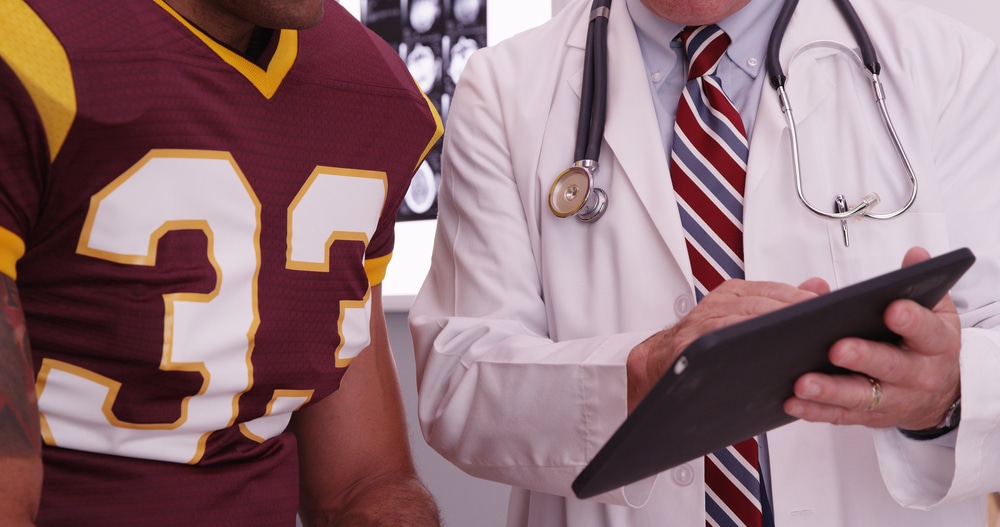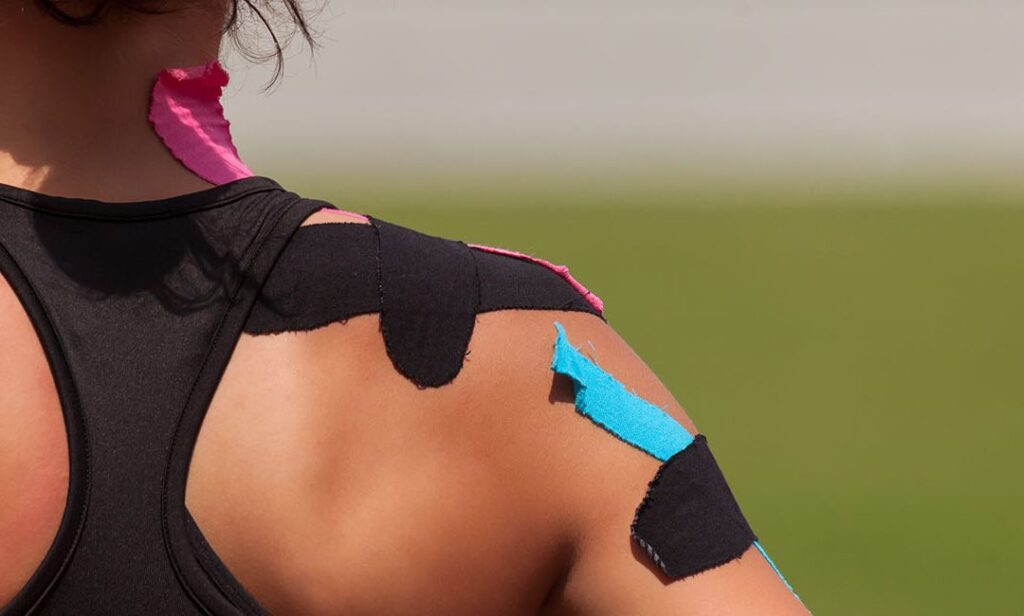This website uses cookies so that we can provide you with the best user experience possible. Cookie information is stored in your browser and performs functions such as recognising you when you return to our website and helping our team to understand which sections of the website you find most interesting and useful.

It’s essential for patients with shoulder injuries to work closely with our Orthopedic team to ensure they follow a comprehensive treatment plan that meets their specific medical needs and goals.

Diagnostic Shoulder Arthroscopy: Sometimes, diagnostic shoulder arthroscopy may be performed when the diagnosis remains uncertain despite imaging studies. This minimally invasive procedure allows Dr. Pournaras to directly visualize the inside of the shoulder joint and assess the integrity of the labrum, as well as other structures. If a labrum tear is confirmed during arthroscopy, surgical treatment may be performed simultaneously to repair or address the tear.

The shoulder labrum is a thick piece of soft tissue that attaches to your shoulder socket’s rim, helping keep the ball joint in place.
The labrum can tear in a few different ways:
- Entirely off the bone
- Along the edge of the labrum
- Where the bicep tendon attaches.
Diagnosing a labrum tear can involve a combination of the following:
Patient History: Our medical team will begin by asking about your symptoms, including when they started, what activities exacerbate or alleviate them, and any history of trauma or repetitive overuse. Symptoms associated with a labrum tear may include shoulder pain, clicking or popping sensations, shoulder instability, reduced range of motion, and weakness.
Physical Exam: We will examine your shoulder, including tests to assess stability, range of motion, strength, and specific provocative maneuvers to reproduce symptoms associated with a labrum tear. For example, the O’Brien test, anterior apprehension, and relocation tests are generally used in this evaluation.
X rays – Imaging Studies:
Magnetic Resonance Imaging (MRI): MRI is preferred for diagnosing labrum tears. It provides detailed images of the soft tissues in the shoulder, including the labrum, ligaments, tendons, and cartilage. MRI can help identify the location, size, and severity of the tear, as well as any associated injuries or abnormalities.
Magnetic Resonance Arthrography (MRA): MRA involves injecting a contrast dye into the shoulder before MRI to enhance visualization of the labrum and other structures. This technique can improve the accuracy of diagnosing labrum tears, particularly subtle or complex tears.
Computed Tomography (CT): CT scans may be used to assess bony abnormalities or to evaluate the extent of bone loss associated with labrum tears, particularly in cases of shoulder instability or recurrent dislocations.
Ultrasound: Ultrasound imaging may be used to evaluate labrum tears, particularly in cases where MRI is contraindicated or unavailable. While not as detailed as MRI, ultrasound can still provide helpful information about the integrity of the labrum and surrounding structures.
A prompt and accurate diagnosis is vital to initiate appropriate treatment and prevent further damage to your shoulder injury.

If you are experiencing pain in your shoulder and need medical care, please contact Dr. Stephen W. Pournaras and our professional medical staff can help you recover by simply contacting us today.
Shoulder labral repair is a surgical procedure to repair a torn labrum in the shoulder. The labrum is a ring of cartilage that surrounds the socket (glenoid) of the shoulder, providing stability and cushioning to the joint. Labral tears can occur as a result of trauma, repetitive overuse, or degenerative changes, and they can contribute to shoulder pain, instability, and reduced function.
The shoulder labral repair procedure:
Preoperative Evaluation: Before surgery, the patient undergoes a preoperative evaluation, which may include a physical examination, imaging studies (such as MRI or CT scan), and a medical history review. Our medical team will assess the severity and location of the labral tear and determine the most appropriate surgical approach.
Anesthesia: Shoulder labral repair is typically performed under general anesthesia, although regional anesthesia (such as a nerve block) may also be used. The anesthesia team monitors the patient’s vital signs throughout the procedure to ensure safety and comfort.
Surgical Approach: Dr. Pournaras will make small incisions around the shoulder to access the torn labrum. The specific location and number of incisions depend on factors such as the location and extent of the labral tear and the surgical technique used.
Labral Repair: Once the torn labrum is exposed, Dr. Pournaras will use specialized instruments to reattach the labrum to the rim of the glenoid (shoulder socket). This may involve removing any damaged or frayed tissue, preparing the bony surface of the glenoid, and securing the labrum in place using sutures, anchors, or other fixation devices.
Capsular Plication: In some cases, Dr. Pournaras may also tighten or plicate the loose or stretched capsule (the fibrous tissue that surrounds the shoulder joint) to further stabilize the joint and prevent recurrent dislocations.
Closure: After the labral repair is completed, the incisions are closed with sutures or surgical tape, and sterile dressings are applied to the surgical site.
Recovery: Following surgery, the patient is monitored in the recovery area before being discharged home or to a hospital room. Pain management medications are provided as needed, and instructions are given for wound care, activity restrictions, and rehabilitation exercises.
Rehabilitation: Physical therapy and rehabilitation are typically initiated shortly after surgery to help restore strength, range of motion, and function to the shoulder. The specific rehabilitation program may vary depending on the type of labral tear, surgical technique used, and the individual patient’s needs.
Shoulder labral repair can be highly effective in reducing pain, improving stability, and restoring shoulder function in patients with labral tears.
Symptoms of Shoulder Labrum Tear
A shoulder labrum tear can cause a range of symptoms, which may vary depending on the severity and location of the tear.
Common symptoms include:
Shoulder Pain: Pain in the shoulder is often the most prominent symptom of a labrum tear. The pain may be localized to the front, back, or top of the shoulder and may worsen with specific movements or activities, such as reaching overhead or lifting heavy objects.
Catching or Popping Sensation: Some patients with a labrum tear may experience a sensation of catching, popping, or clicking in the shoulder, particularly during certain movements. This sensation may occur as the torn labrum moves or catches within the joint.
Shoulder Instability: Labrum tears can contribute to shoulder instability, causing a feeling of looseness or instability in the shoulder. Patients may feel as though their shoulder is slipping out of place or giving way, particularly during activities that involve overhead movements or sudden changes in direction.
Decreased Range of Motion: A labrum tear can restrict the normal range of motion in the shoulder, making certain movements difficult or painful. Patients may experience limitations in shoulder abduction (raising the arm to the side), external rotation (rotating the arm outward), or overhead reaching.
Weakness or Fatigue: Some patients with a labrum tear may experience weakness or fatigue in the shoulder muscles, particularly during activities that require repetitive use of the shoulder. This weakness may be due to pain, muscle imbalances, or altered shoulder mechanics.
Shoulder Stiffness: Labrum tears can contribute to shoulder stiffness or decreased flexibility, making it difficult to move the shoulder through its full range of motion. Patients may notice stiffness when trying to reach behind their back, reach across their body, or perform other shoulder movements.
Pain at Night or Rest: Labrum tear-related pain may worsen at night or during rest periods, mainly when lying on the affected shoulder. This nocturnal pain may interfere with sleep and contribute to overall discomfort.
It’s important to note that not all labrum tears cause symptoms, and the severity of symptoms can vary widely. Some patients with labrum tears may experience mild discomfort or occasional episodes of instability, while others may have more severe pain and functional limitations. Prompt evaluation and treatment from our medical team are important to accurately diagnose a labrum tear and develop an appropriate treatment plan to address the underlying causes.
Make Your Appointment Today
Fair Oaks Ortho – Fairfax,VA


